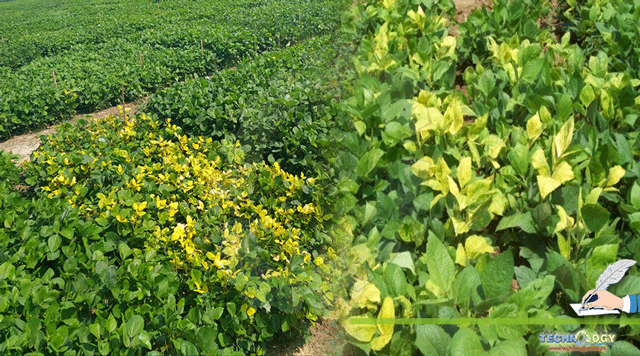Mungbean (Vigna radiata L.) belongs to leguminous family. It originated from Indian sub-continent since ancient time. It is widely grown Australia, south Asia, Africa and South America.

By Muhammad Mahran Aslam, Mohammad Aquil Siddiqui, Imtiaz Ahmad Khan and Mahboob Ali Sial
Nuclear Institute of Agriculture (NIA) Tandojam Sindh Pakistan
Mungbean plant is 23 to 30 inches tall, moderate number of branches, 3-5 inch long pods, and contains 11-16 seeds. Globally, it is grown as a human food crop in the form of dry bean or fresh sprouts but it can also be used as fodder and green manure crop. Mungbean is one of the most important kharif pulse crops in Pakistan. It is mostly cultivated in the south Punjab and Sindh provinces. Sindh is the second major mungbean producing province after Punjab and produces 35% of the total mungbean production. The cultivation of mungbean is concentrated in the districts Hyderabad, Nawabshah, Baddin, and Larkhana in the Sindh province during the spring as well as kharif seasons. It is a short duration crop and can be cultivated in different crop rotations. Nevertheless, mostly it is cultivated in rotation with wheat. Mungbean is a promising crop as it can be fitted in various cropping systems in Punjab and Sindh due to short duration and uniform maturing varieties.
The mungbean breeding in Pakistan has remained limited as it is considered a minor crop. The research on the mungbean was started by PARC and coordinated with provincial pulse institutes in Pakistan since 1980. From 1985 to date, various short duration and high yielding varieties of mungbean has been released for general cultivation. Mungbean is a warm season crop requiring 90-120 days for maturity under frost free conditions. The sandy loam soil having pH 6.2 to 7.2 is ideal for mungbean cultivation. If soil contains high organic matter, vigorous seed yield can be attained even without fertilizer and water application. The heavy clayey soil having poor drainage ability is not fit for mungbean production. Adequate rainfall is a key factor that determines proper flowering and pod filling. However, high rainfall and humidity delays crop maturity and may promote various diseases.
The climate shift has caused increase in temperature, greenhouse gases emission, and deforestation. The greenhouse gases damage the ozone layer which further enhances temperature, CO2 concentration and precipitation and cause melting of ice caps and floods. NASA and IPCC reported that the concentration of CO2 was less than 300ppm in 1950 but now it has reached 430ppm. The heat trapping nature of CO2 is projected to upsurge the earth temperature by 5.90C at the end of this century. Moreover, the melting of glaciers and floods, due to climate change, cause soil erosion and land sliding. The climatic shifts significantly effect crop production as well. Agriculture is a core part of economy and foreign exchange for various countries. The climate change may have positive or negative effect on the plant growth. The high temperature, elevated CO2, and increased precipitation have detrimental effect on various stages of plant growth and development.
Mungbean is very important protein plant which is effected by the climate change. Its seed contains protein (23.6%), fats (1.2%), carbohydrates (58.2%), iron (5.9-7.6 mg/100 g), and minerals (4%). It is also an excellent source of vitamin B-9 which improves brain health. Mungbean, like other pulses, has balanced nutritional value and contains various beneficial enzymes, vitamins, minerals which are essential parts of healthy diet. Mungbean has various health benefits including antioxidant effects, antifungal and antimicrobial activity (against the Helicobacter pylori bacteria that causes stomach ulcers), and hypertension (lower blood pressure), diabetes (lower blood glucose levels) and cancer (antitumor properties) reducing effects. Hence, mungbean has a range of health benefits.
Recent collaborative plant breeding efforts enable mungbean promotion by developing short duration high yield mungbean varieties to combat the malnutrition and climate change. Unfortunately, mungbean is considered a minor crop and there has been a lack of interest regarding its cultivation among farming community due to low yield, unawareness, and diseases susceptibility. Apposite mungbean diet can help in reducing hidden hunger and offer balanced diet.